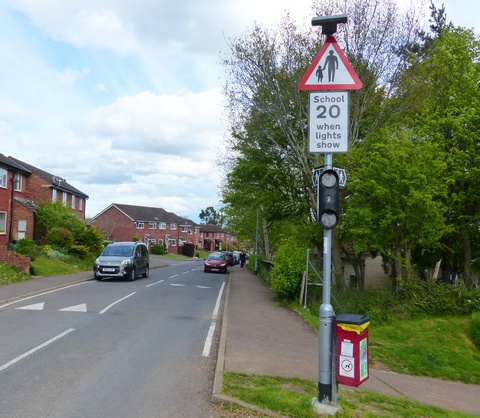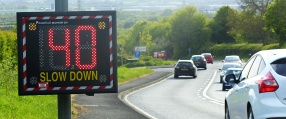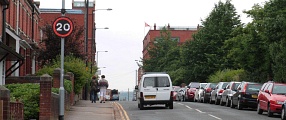20 mph when lights show
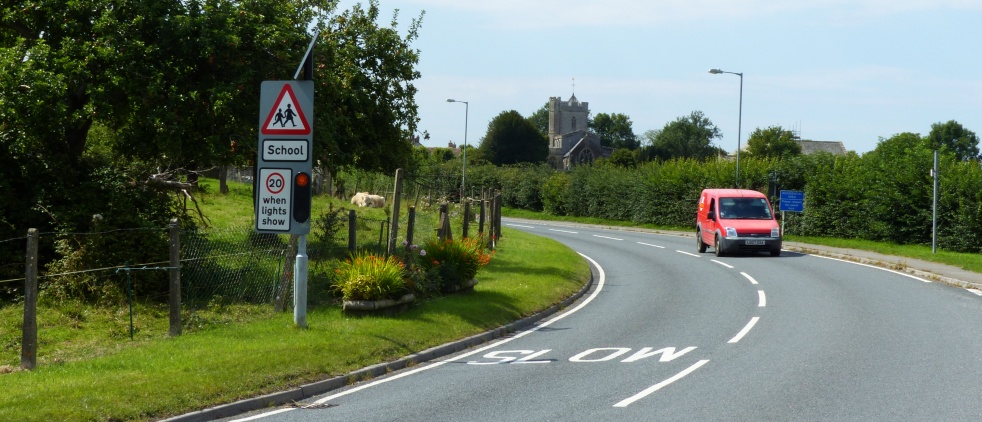
Flashing lights alert drivers to a hazard in the road ahead. The flashing lights are often used with school signs to make drivers aware that children could be in the road ahead. The lights normally flash at school opening and closing times - this increases the visibility of the school signs to drivers when children are most likely to be using the road.
In addition, the signs read "School, 20 when lights show”. This means a speed limit of 20 mph is advisory. Drivers are still permitted by law to drive above 20 mph, however the flashing signs advise 20 mph.
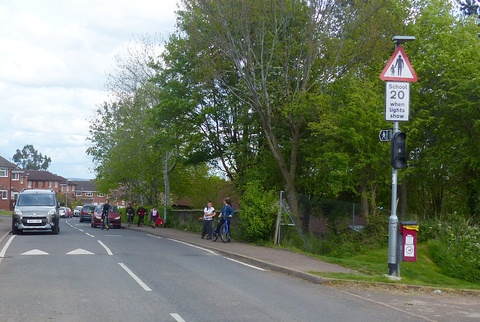
Disadvantages
- The 20 mph speed limit is advisory only, and can be ignored
- The school signs are warnings only, and some drivers may not change their behaviour
- The advisory speed limit signs could give some drivers the impression that speeds above 20 mph are advised when lights are off (which might not be safe)
- The signs and lights could look intrusive or out of place in some rural areas
Considerations
- May cause traffic to divert to other routes
Restrictions
- Normally only placed near schools, on all approach roads to the school
There's also some general restrictions to note for all schemes
Advantages
- The flashing lights increase the visibility of the signs
- Vehicles reducing their speed will improve road safety near the school
- The school warning signs give drivers a good reason to slow down and take extra care
- A relatively low cost option
- Can be solar powered, which significantly lowers installation costs
Effectiveness
This intervention doesn’t have any safety evidence available. Instead, likely outcomes are covered.
It’s possible that some drivers will not modify their speed as a result of these signs, however there’s a good chance that many drivers will reduce their speed and take extra care. The flashing lights significantly increase the visibility of these signs, and children shown on the sign remind drivers why slower speeds are advised.
As the 20 mph advisory speed limit appears similar to a mandatory speed limit, many drivers may slow down because they believe that exceeding 20 mph would be illegal.
Reducing motor vehicle speeds increases safety because:
- The vehicle has travelled less distance before the driver can react to a hazard
- Braking distance is reduced, so the vehicle can stop more quickly before a hazard
- A slower moving vehicle will exert less energy on occupants as the vehicle rapidly changes speed on impact (crashes)
- A slower moving vehicle will transfer less energy to a pedestrian in the event of a collision
